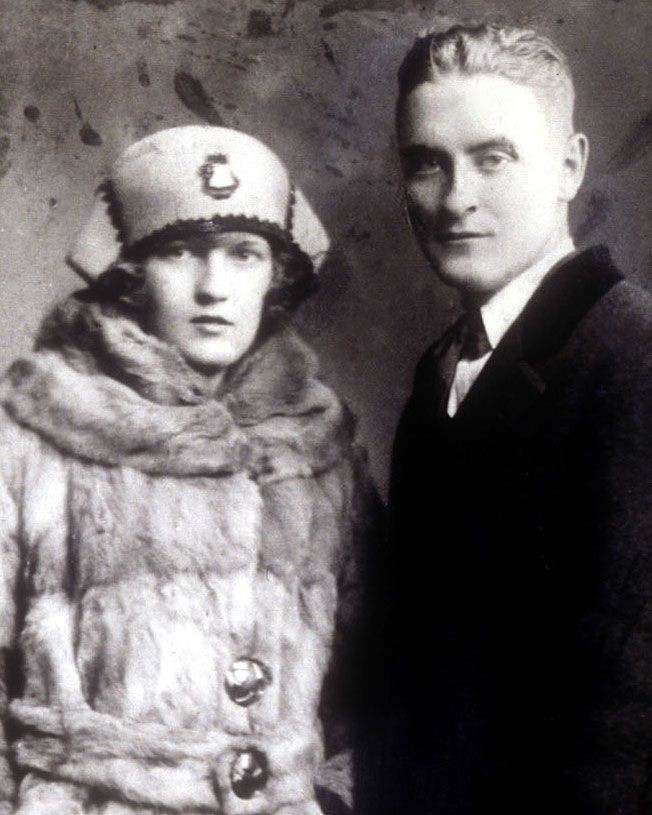F. Scott Fitzgerald, born on September 24, 1896, in St. Paul, Minnesota, and passing away on December 21, 1940, in Hollywood, California, remains a towering figure in American literature. Renowned for his short stories and novels that captured the essence of the Jazz Age, his most celebrated work is undoubtedly The Great Gatsby (1925). Fitzgerald’s life, intertwined with his wife Zelda’s, was a spectacle in itself, both in America and France, becoming nearly as famous as his literary creations. This guide delves into his life, offering a framework for understanding his complexities, particularly when viewed through the lens of an A&E biography.
Fitzgerald’s complex heritage stemmed from an unsuccessful, aristocratic father and a dynamic, provincial mother. He saw himself as both an heir to the tradition of Francis Scott Key, author of “The Star-Spangled Banner”, and as a descendant of Irish immigrants. This created internal conflict as he viewed American life as both vulgar and full of possibilities.
The Formative Years: Ambition and Disappointment
Fitzgerald possessed a deeply romantic spirit, what he termed “a heightened sensitivity to the promises of life.” This drove him to seek experiences that would fulfill these promises. His early academic endeavors at St. Paul Academy and Newman School were marked by overzealousness and a lack of popularity. However, at Princeton University, he seemed poised to achieve his aspirations. He became a key figure in the university’s literary scene, forging lasting friendships with Edmund Wilson and John Peale Bishop. He rose to prominence in the Triangle Club, a dramatic society, and secured membership in a leading university club. He also fell in love with Ginevra King, a celebrated beauty. However, he ultimately lost Ginevra and failed out of Princeton.
Love, Loss, and Literary Triumph
Upon returning to Princeton, he found himself without the positions he previously coveted. In November 1917, he left to join the army. While stationed near Montgomery, Alabama, in July 1918, he met Zelda Sayre, the daughter of an Alabama Supreme Court judge. Their connection was immediate and profound. Determined to win her hand, Fitzgerald went to New York, seeking instant success. However, his advertising job at $90 a month proved insufficient. Zelda broke off their engagement, leading Fitzgerald to an infamous period of heavy drinking. He then retreated to St. Paul, Minnesota, to revise a novel he had begun at Princeton. This Side of Paradise was published in the spring of 1920. Zelda married him, and Fitzgerald wrote of that moment
riding in a taxi one afternoon between very tall buildings under a mauve and rosy sky; I began to bawl because I had everything I wanted and knew I would never be so happy again.
This Side of Paradise became a sensation, capturing the shifting morality of the younger generation and catapulting Fitzgerald to fame. This opened doors to prestigious literary magazines like Scribner’s and lucrative popular publications such as The Saturday Evening Post.
 F. Scott and Zelda Fitzgerald in 1921
F. Scott and Zelda Fitzgerald in 1921
The Prince and Princess of the Jazz Age: Success and Its Shadows
The Fitzgeralds embraced their newfound roles, earning the moniker “the prince and princess of their generation” from Ring Lardner. Yet, they were also aware of the potential pitfalls of this lifestyle. His second novel, The Beautiful and Damned (1922), explores this theme. It portrays a handsome young man and his beautiful wife gradually descending into a diminished middle age while awaiting a large inheritance. The irony is that they receive the inheritance when they are no longer capable of appreciating it.
Expatriation and Literary Masterpiece
To avoid this fate, the Fitzgeralds, along with their daughter Frances (“Scottie”), relocated to the Riviera in 1924. There, they joined a circle of American expatriates, whose style was largely influenced by Gerald and Sara Murphy. Fitzgerald later depicted this society in Tender Is the Night. Shortly after arriving in France, Fitzgerald completed The Great Gatsby (1925), widely considered his masterpiece. This novel embodies his divided nature, contrasting the naive Midwesterner’s belief in the “American Dream,” represented by Jay Gatsby, with the sophisticated gentleman narrator, Nick Carraway. The Great Gatsby is a quintessential American novel, connecting Gatsby’s personal ambition with the grand aspirations of the nation’s founders. A collection of his finest short stories appeared in All the Sad Young Men (1926), notably “The Rich Boy” and “Absolution.”
Decline and Legacy
The following decade was marked by turmoil. Fitzgerald’s alcohol consumption increased, and Zelda began obsessively practicing ballet. In 1930, she suffered a mental breakdown, followed by another in 1932, from which she never fully recovered. Throughout the 1930s, they struggled to maintain their relationship, but eventually lost the battle. As Fitzgerald put it, “I left my capacity for hoping on the little roads that led to Zelda’s sanitarium.” He didn’t complete his next novel, Tender Is the Night, until 1934. It tells the story of a psychiatrist who marries a patient. As she recovers, she drains his vitality until he becomes un homme épuisé (“a man used up”). Despite being his most moving work, it was a commercial failure.
This setback and Zelda’s condition pushed Fitzgerald to the brink of alcoholism. In 1937, he found work as a scriptwriter in Hollywood, where he met and fell in love with Sheilah Graham, a well-known gossip columnist. He lived quietly with her for the remainder of his life, punctuated by occasional drunken episodes. He visited Zelda and his daughter Scottie, who entered Vassar College in 1938. In October 1939, he began The Last Tycoon, a novel set in Hollywood. The protagonist, Monroe Stahr, is based on the producer Irving Thalberg. This was Fitzgerald’s final attempt to explore the American dream and the type of man capable of achieving it. He died of a heart attack at the age of 44, leaving the novel unfinished. The Last Tycoon stands as a testament to his enduring talent.
Viewing Guide Takeaways: Understanding the A&E Biography
When watching an A&E biography of F. Scott Fitzgerald, consider the following:
- The Duality: Look for the contrasting elements within Fitzgerald himself – the romantic idealist versus the cynical observer.
- The Zelda Factor: Analyze Zelda’s influence on his life and work. Was she a muse, a burden, or a co-creator?
- The American Dream: Consider how Fitzgerald both embraced and critiqued the American Dream in his novels.
- The Price of Fame: Reflect on the impact of fame and fortune on Fitzgerald’s life and relationships.
- The Unfinished Symphony: Contemplate the potential of The Last Tycoon and what it reveals about Fitzgerald’s evolving vision.
By keeping these points in mind, you can gain a deeper appreciation for the life and work of F. Scott Fitzgerald, a literary icon whose story continues to resonate today.

